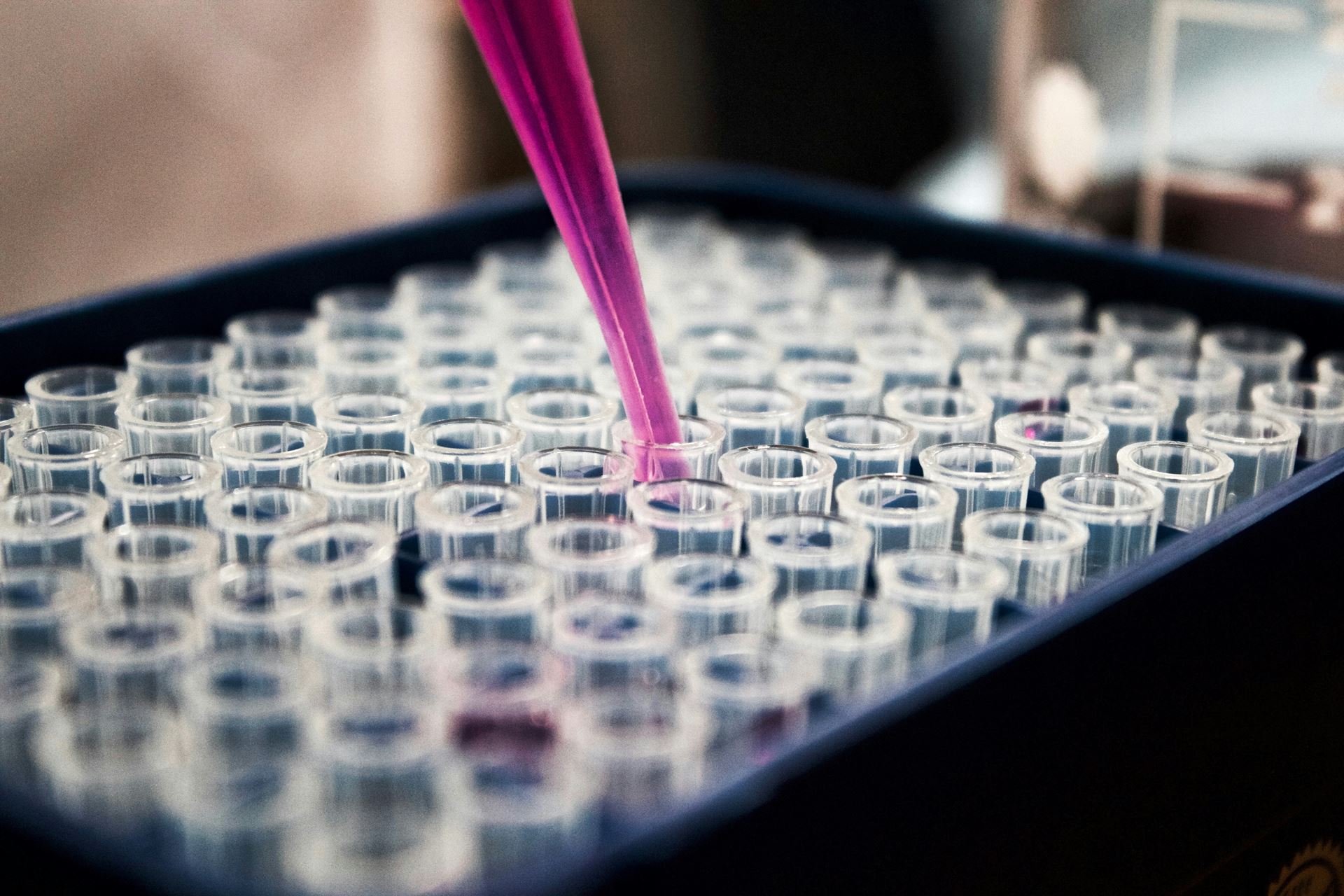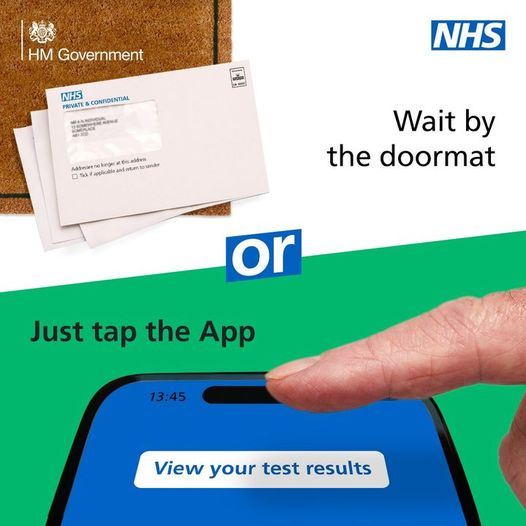Test Results
Tests and Investigations
Waiting for test results?
Results of blood tests and other types of tests are received daily and reviewed by the Doctor who requested the test.
We want to make sure you never miss important information about your health. Please note — our Practice doesn’t automatically call patients with test results. Instead, we ask that you check them yourself once they’re ready.
The quickest and easiest way is online — you can view your results at a time that suits you, without waiting on the phone. It’s simple, secure, and helps you stay in control of your own care.

Hospital and Consultant Tests
If your test has been carried out at a Clinic or Hospital please call the Clinic or Hospital for the result, as we cannot action tests which have been requested by other Clinicians outside the practice. If the consultant’s secretary or colleague inform you they will send the results to your GP, explain that you want the results from the specialist who arranged them who is in by far the best place to give appropriate advice.
If you have been asked to find out about test results initiated by the surgery, we offer several options. Scroll down to find out more.
Find out your test results online
The quickest and easiest way is online — you can view your results at a time that suits you, without waiting on the phone. It’s simple, secure, and helps you stay in control of your own care.
Do you have a SystmOnline Services Patient Account?
Patients who have registered to use the SystmOnline Patient Access system can view and download their test results online using their SystmOnline login - the same login details as used for online repeat prescription requests.
Don't have a SystmOnline Account but still want to ask about your test results online?
You do not need to have a SystmOnline account to use this service, but if you log in using your NHS login details, it will save you from having to enter some of your personal information.
Scroll down to find out more about getting your test results online
View your test results using your NHS App or account
You can view test results in your GP health record using the NHS App or by logging into your account on the NHS website, both provided and managed by the NHS. You will need an NHS login to use the NHS app. If you don't already have one, you will need to set up an NHS login before using the NHS App.
Once registered, you will be able to log in to NHS online services using the NHS App on your Smartphone or through an internet browser using your email address and password.

Find out your test results by phone or in person
If you are not able to access your test results online, please telephone or call in to the surgery after 14:30.
You will be asked to give your full name, address and date of birth and the date on which the test was carried out. This is to protect patient confidentiality. Please note that test results can only be given to the individual concerned. Please allow five working days before making enquiries. Some tests may take longer and the Doctor will advise you if this is the case.
Our reception staff are not qualified to comment on results therefore it is your responsibility to check them and make any necessary follow-up appointment with the doctor.
Please note that we do have a strict policy regarding confidentiality and data protection. In this respect we will only give out results to the person they relate to unless that person has given prior permission for their release or if they are not capable of understanding them.
Information for patients about tests and investigations
Blood Tests
A blood test is when a sample of blood is taken for testing in a laboratory. Blood tests have a wide range of uses and are one of the most common types of medical test. For example, a blood test can be used to:
- assess your general state of health
- confirm the presence of a bacterial or viral infection
- see how well certain organs, such as the liver and kidneys, are functioning
A blood test usually involves the phlebotomist taking a blood sample from a blood vessel in your arm and the usual place for a sample is the inside of the elbow or wrist, where the veins are relatively close to the surface. Blood samples from children are most commonly taken from the back of the hand. The childs hand will be anaesthetised (numbed) with a special cream before the sample is taken.
You can find out more about blood tests, their purpose and the way they are performed on the NHS website by following this link>>
Specimens
Occasionally, you may be requested to provide a urine or stool sample. All specimens must be provided in a suitable container and marked clearly with name, date of birth, date provided and reason for the specimen.
Failure to do so may mean that the test will need to be repeated – Please note that when bringing in a sample to the surgery, only samples in the correct container can be accepted. These are available from reception.
To ensure your sample reaches the laboratory on time, please hand it in before the daily collection time:
-
Cranborne Surgery: 11.30 am
-
Lake Road Surgery: 3.30 pm
More information on how to collect and store samples is available on the NHS website via the links below.
How to collect and store a urine sample>>
How to collect and store a stool sample>>
Spirometry
There are a number of chest conditions, which may cause breathing difficulties. Sometimes it is helpful to see how well you breathe out to help diagnose any condition or to see if the treatment you are having is working well. This may involve you blowing into a machine – a spirometer – which measures how well you can breathe out.
There are some requirements necessary before you have the test done, such as withholding use of your usual inhalers for a few hours, or usual tablets relating to any chest condition for 24 hours and avoiding vigorous exercise prior to the test.
Spirometry with reversibility
Sometimes you will be asked to undertake a spirometry test with reversibility. This means you will be asked to blow into the machine without using your inhalers first and then again after you have used your inhalers.
Doppler studies
A Doppler test managed by is undertaken to help measure the flow of blood through the arteries in your arms and legs using sound waves to make a noise when blood flow is detected. The Doppler is used in place of the stethoscope normally used when taking blood pressures. The test is to detect if there are any abnormalities in the flow of blood in your vessels.
A Doppler assessment is a painless procedure and often undertaken as part of any overall assessment of whether provision of support or compression hosiery (full length or knee high stockings or socks) may be helpful to you.
Helicobacter Breath Test
Helicobacter pylori is a germ which can infect the lining of the stomach and can cause a range of stomach problems for some people. Once identified, it can be easily treated with a course of antibiotics and acid suppressing medicines.
Infection with helicobacter pylori can be confirmed with a breath test performed by the nurse at the surgery. A sample of your breath is analysed after you have taken a special drink given to you.
There are some requirements necessary before you take the test such as withholding any regularly taken antibiotics or stomach medications for a few weeks.
Hearing Tests (Audiometry)
Damage to any part of the ear can cause a hearing loss. Problems may occur in the ear canal or the middle ear and hearing loss can be temporary or permanent. A hearing test checks whether there is a problem with any of the different mechanisms that allow a person to hear.
The test involves the use of a special machine called an audiometer, which plays a series of tones through headphones, which you will be asked to wear. The tones vary in pitch and loudness and the nurse conducting the hearing test will control the volume and tone of the sounds relayed through the machine. You will be asked to respond to each sound you hear even if very faint.
The results of a hearing test will form a graph called an audiogram. This will show if there is any pattern to the hearing loss you may be experiencing and help your doctor assess the most appropriate management.
Blood Pressure Check
Blood pressure is the pressure created when blood is forced out of the heart and comes into contact with the walls of the arteries which transport blood around the body. The pressure of blood flowing in the arteries changes according to the different phases of the heartbeat cycle. The pressure in the arteries will be at its highest when the heart is ‘contracting’ and pumping blood out, and at its lowest as the heart relaxes before it pumps again.
Blood pressure is recorded as two numbers: the systolic pressure (as the heart beats) and the diastolic (as the heart relaxes between beats). The numbers are written one above or before the other, the systolic number on top and the diastolic on the bottom.
Your target blood pressure should be less than 150/90 unless you have been told otherwise. If you have any coronary heart disease such as angina or have had a heart attack or stroke, or have diabetes or kidney disease, it is better for your target blood pressure to be less than 130/80.
High blood pressure – hypertension – means that your blood pressure is constantly higher than the recommended target blood pressure. Over time if this is not treated, you become more at risk of heart disease or having a stroke.
You may be asked to come to see a nurse for a blood pressure check and if it is found to be above the recommended target, you may also be asked to have a number of tests – blood tests, an electrocardiogram (ECG), a painless procedure which records the electrical activity of the heart, ambulatory blood pressure (ABP) which records your blood pressure over a 12 hour period during the day – to help your doctor decide if treatment is necessary.
Home Blood Pressure Monitoring
Surgery blood pressure measurements do not always give a true picture of what your blood pressure is doing over your normal day. Some people are found to have a higher blood pressure when at the surgery or when they are not relaxed.
It is now recommended that a better way to check your blood pressure is to measure it yourself twice each morning and evening when you are at home, relaxed and comfortable. This will then give us an idea as to what your blood pressure really is, and whether the measureents we take in the surgery are similar to those you record at home.
If you have your own blood pressure monitor, you may be asked to record a series of readings over a week to be averaged and recorded in your notes. If you do not have your own machine, you may be loaned a machine from the surgery which a nurse will demonstrate how to use. (Please check with reception regarding the availability of blood pressure monitoring equipment).
Information about your laboratory tests
For information on what your laboratory test results mean please visit Lab Tests Online>>
Xrays and Scans
Sometimes your GP might want to have an image of what is happening inside your body. This means that we will need to send you for an X-Ray or a scan. These procedures are explained below:
X-Ray
An X-ray is a widely used diagnostic test to examine the inside of the body. X-rays are a very effective way of detecting problems with bones, such as fractures. They can also often identify problems with your internal organs such as your lungs.
If you have an X-ray, you will be asked to lie on a table or stand against a surface so that the part of your body being X-rayed is between the X-ray tube and the photographic plate.
An X-ray is usually carried out by a radiographer, a healthcare professional who specialises in using imaging technology, such as X-rays and ultrasound scanners.
You can find out more about x-ray tests, how they are performed, their function and the risks by visiting the NHS website here>>.
MRI Scan
Magnetic resonance imaging (MRI) is a type of scan that uses strong magnetic fields and radio waves to produce detailed images of the inside of the body. An MRI scanner is a large tube that contains powerful magnets. An MRI scan can be used to examine almost any part of the body, including the:
- brain and spinal cord
- bones and joints
- breasts
- heart and blood vessels
- internal organs, such as the liver, womb or prostate gland
If you have an MRI scan you will lie inside the scanner and you will be able to talk to the radiographer through an intercom and they will be able to see you on a television monitor throughout the scan.
At certain times during the scan, the scanner will make loud tapping noises. This is the electric current in the scanner coils being turned on and off. You will be given earplugs or headphones to wear. It is very important that you keep as still as possible during your MRI scan. The scan will last between 15 and 90 minutes, depending on the size of the area being scanned and how many images are taken.
You can read more about how MRI scans work on the NHS website.
Ultrasound Scan
An ultrasound scan, sometimes called a sonogram, is a procedure that uses high frequency sound waves to create an image of part of the inside of the body.
As sound waves are used rather than radiation, ultrasound scans are commonly used during pregnancy to produce images of the baby in the womb.
Ultrasound scans can also be used to:
- detect heart problems
- examine other parts of the body such as the liver, kidneys and abdomen
- help guide a surgeon performing some types of biopsy
Most ultrasound scans don’t take long to perform, typically between 15 and 45 minutes. Your ultrasound scan will generally take place in an X-ray department in hospital and will normally be performed either by a sonographer. A sonographer is a specialist trained in the use of ultrasound, who will provide a descriptive report for the doctor to make a diagnosis.
If you have an external ultrasound scan, a small handheld device called a transducer is placed onto you skin, and moved over the part of the body being examined. A lubricating gel is put onto your skin to allow the transducer to move smoothly. Pulses of ultrasound are sent from a probe in the transducer, through your skin and into your body. They then bounce back from the structures of your body to be displayed as an image on the monitor.
Before having some types of ultrasound scan, you may be asked to follow certain instructions before the procedure, such as:
- drink water and not go to the toilet until after the test – this is to fill your bladder and may be needed before a scan of your unborn baby or your pelvic area
- avoid eating for several hours before the scan – this may be needed before a scan of your abdomen to lower the amount of air and gas in your stomach or bowel and enable your gallbladder to be better assessed
- depending on the area of your body being examined, the hospital may also ask you to remove some clothing and wear a hospital gown.
If you would like to understand more about ultrasound scans, when they are used and how they work, please visit the NHS website.
Page created: 13 April 2023


